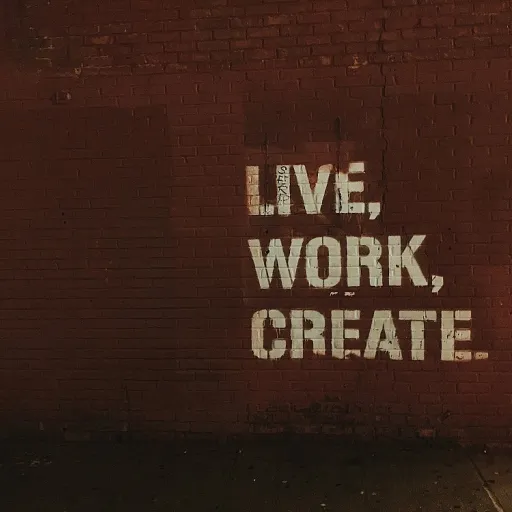
Understanding the Intersection of Business Development and Sustainability
Exploring the Crossroads of Business Development and Environmental Sustainability
Understanding the interplay between business development and sustainability is crucial for today's leaders aiming to foster long-term success. As businesses strive to meet market demands while minimizing their environmental footprint, sustainability becomes a pivotal strategic advisory focus. The intersection between these two domains can offer numerous opportunities. For starters, incorporating sustainability into corporate strategies can enhance brand image, opening doors to new market segments and client bases. Businesses that position themselves at the forefront of sustainability can attract consortium buyers who prioritize renewable and clean energy solutions. Moreover, organizations embracing sustainable business practices often see improvements in resource efficiency and innovation. Business development initiatives rooted in sustainability can lead to the creation of new jobs, bringing on board development associates and analysts equipped to navigate the evolving landscape. This approach not only drives growth but also establishes sustainable leadership that stands resilient amid economic and environmental changes. For leaders, the alignment of business development with environmental goals presents challenges, such as balancing immediate financial returns against long-term benefits. Still, the commitment to sustainability strategically paves the way for lasting competitive advantage. By joining sustainability roundtables and engaging in strategic advisory services, managers and executives gain valuable insights into best practices. Navigating this integrated approach ensures businesses not only survive but thrive in a rapidly evolving marketplace, reflecting a commitment to both profit and planet.Key Challenges in Integrating Sustainability
Overcoming Barriers to Integration
Integrating sustainability into business development is undeniably a journey fraught with challenges. Yet, the convergence of environmental goals with economic development is necessary not just for companies, but for the broader societal benefit. From complex logistics to adapting renewable energy resources, the path can seem daunting to many enterprises. Understanding these obstacles helps in formulating more effective strategies.
One of the primary challenges lies in aligning sustainability with existing business models. Companies often face an uncomfortable transition away from traditional models to embrace renewable practices. The complexity increases further when trying to integrate clean energy solutions and sustainable services into existing portfolios. It involves aligning corporate sustainability goals with strategic advisory processes to create more value for consortium buyers and member clients.
- Resource Utilization: Switching to sustainable resources requires investment in technology and processes that might initially disrupt regular operations and complicate management for many firms.
- Cost Implications: Both tangible and intangible costs can arise from the shift towards sustainable business models, impacting short-term profit margins while promising long-term gains.
- Consumer Resistance: Ensuring consumer buy-in to these new sustainable paths is critical. It involves sophisticated communication strategies to educate and engage them in sustainable transformations.
The role of strategic advisory and leadership cannot be underestimated in addressing these barriers. Business leaders, from managers to advisory board members, are pivotal in championing and communicating the benefits of sustainable development practices. Development associates and business development managers can serve as critical change agents, facilitating the transition by providing guidance on strategic implementation while addressing internal and external stakeholder concerns.
Ultimately, overcoming these challenges requires a company-wide commitment. Employing a sustainability roundtable can provide a platform for collaborative problem-solving, allowing corporate entities to share insights and best practices. Prominent management and advisory services often suggest empowering a team of sustainability analysts to pinpoint precise areas where sustainable practices can be assimilated most effectively.
Innovative Strategies for Sustainable Growth
Innovative Approaches to Achieve Greener Growth
Integrating sustainability into business development requires innovative thinking and strategic adaptation. As companies transition towards more sustainable business models, there are several key strategies they can adopt to achieve cleaner and more efficient growth. One effective approach is to leverage renewable energy sources. Companies can significantly reduce their carbon footprint by investing in clean energy technologies. Doing so not only supports environmental sustainability but also aligns with global efforts to combat climate change. Businesses can work with strategic advisory services to evaluate the potential benefits and risks of these investments, ensuring that their renewable energy strategies are both economically viable and environmentally beneficial. Incorporating sustainability into corporate strategy goes beyond energy solutions; it involves reevaluating business operations and supply chains. This means developing sustainable products and initiatives that meet the needs of today's consumers while also conserving resources for future generations. Companies should collaborate with sustainability consultants and analysts to assess how their current practices impact the environment and identify areas for improvement. Moreover, the support of leadership is crucial in driving the shift towards sustainable business development. By creating a culture that values corporate sustainability, leaders can inspire their teams to embrace sustainable practices and explore new opportunities for growth. Participating in discussions at sustainability roundtables or networking with industry peers in roundtable and advisory services can provide invaluable insights and spur innovative ideas. Lastly, businesses should consider joining consortiums dedicated to sustainability. Membership in these groups can facilitate access to resources, share knowledge with fellow members, and collectively push for industry-wide changes that support sustainable development. This collaborative approach not only enhances a company's reputation as a leader in sustainability but also creates new jobs in the sustainability sector and energizes community engagement through shared goals and achievements. By implementing these innovative strategies, companies can position themselves at the forefront of sustainable business development, ensuring long-term success and responsibility in a rapidly changing world.The Role of Leadership in Driving Sustainable Business Development
Leadership's Impact on Building a Sustainable Future
In the evolving landscape of business and ecology, leaders hold the power to forge pathways toward sustainable development. Their decisions and actions can set the trajectory for renewable and environmentally friendly initiatives. As the corporate world shifts focus towards cleaner energy and sustainable strategies, the role of a CEO or senior management becomes increasingly strategic.
Understanding the nuances of strategic advisory, business development associates must align their initiatives with corporate sustainability goals. This involves transitioning toward renewable energy sources, cultivating membership development, and offering advisory and consulting services that are tailored to the business needs and aspirations of their member clients.
A sustainability roundtable, composed of managers and strategic leaders, plays a pivotal role in devising and executing corporate directives that resonate with clean energy jobs and sustainable business practices. The collective input from this consortium of buyers and analysts helps in identifying viable paths for environmental and economic success.
The leadership's vision and guidance are critical in fostering an organizational culture that values innovation and adaptability. As a result, companies are better equipped to address purchaser caused challenges and to pursue a clean, sustainable future with confidence.
Measuring Success in Sustainable Business Development
Tracking Achievements and Identifying Areas for Improvement
Measuring success in sustainable business development isn't merely about tracking profits. It involves evaluating a myriad of factors encompassing environmental, social, and economic impacts. To ensure a holistic approach, businesses need to develop comprehensive metrics that reflect both growth and sustainability.- Integrated Performance Metrics: Companies can utilize key performance indicators (KPIs) that integrate environmental and social governance (ESG) benchmarks. This approach not only aligns with corporate sustainability goals but also provides a clearer picture of how business development strategies are impacting the wider community and ecosystem.
- Renewable Energy Utilization: Tracking the transition to clean energy sources and the extent of renewable energy use within business operations can serve as an important success metric. It highlights a commitment to reducing carbon footprints and promoting sustainable practices.
- Employee Engagement and Job Sustainability: Sustainable business development thrives on robust human capital. Monitoring employee engagement and satisfaction levels, as well as the creation and maintenance of sustainable jobs, can provide a deeper understanding of long-term viability.
- Stakeholder Feedback and Advisory Services: Regular engagement with stakeholders through sustainability roundtables or strategic advisory services can offer invaluable insights. These interactions help businesses measure whether they are meeting the needs of consortium buyers or member clients while maintaining an ethical corporate management approach.
- Technological and Process Innovations: Measuring the success of innovations in processes or technology that promote sustainability is crucial. These innovations, when strategically implemented, can lead to more efficient energy use and reduced environmental impact.














